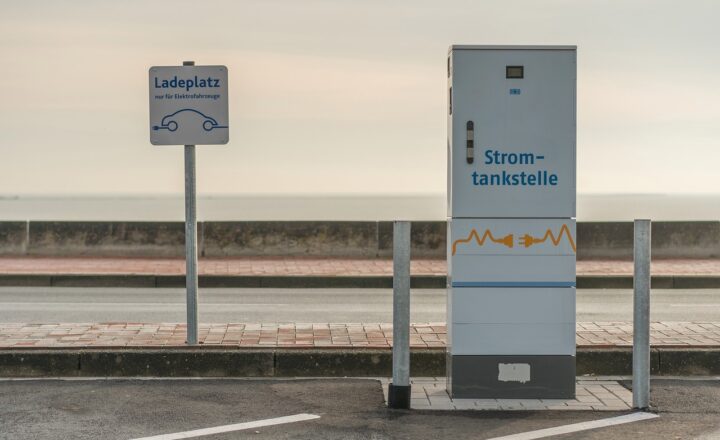
For decades, flying cars have captured the imaginations of people dreaming of a future where congested roads are a thing of the past, and air travel is as simple as driving. From sci-fi movies to ambitious tech projects, the concept of flying cars has sparked conversations about the future of public transport and how we navigate our cities. But will flying cars actually become a reality, or are they destined to remain a futuristic fantasy? In this article, we’ll explore the technological advancements, challenges, and potential impact of flying cars on public transport.
1. The Rise of Urban Air Mobility: Flying Cars and Air Taxis
Urban air mobility (UAM) refers to the use of electric vertical takeoff and landing (eVTOL) vehicles, often dubbed “flying cars” or “air taxis,” to transport people and goods within cities. These vehicles promise to bypass traffic by flying above congested streets, potentially revolutionizing how we commute.
Current Developments: Several companies are working on developing flying cars and air taxis, including major players like Uber Elevate, Joby Aviation, and Volocopter. These eVTOL vehicles are designed to take off and land vertically, much like helicopters, but with quieter, electric propulsion systems. Companies like Airbus and Hyundai have also entered the race, pushing the idea of flying cars closer to reality.
Why It Matters: As cities grow larger and more congested, urban air mobility offers the potential to reduce traffic, shorten commute times, and provide a new mode of transport for densely populated areas. Flying cars could also alleviate pressure on traditional public transportation systems.
2. The Technology Behind Flying Cars: How Do They Work?
Flying cars are more than just a futuristic concept—they are powered by advanced technologies that combine elements of aviation, electric vehicles, and autonomous systems.
Electric Propulsion: Most flying car designs use electric motors for propulsion, making them quieter and more environmentally friendly than traditional aircraft. These vehicles are powered by batteries, similar to electric cars, and are designed to be more sustainable than gas-powered vehicles.
Vertical Takeoff and Landing (VTOL): Flying cars use VTOL technology, which allows them to take off and land vertically, like a helicopter. This eliminates the need for long runways, making them suitable for urban environments where space is limited.
Autonomous and Semi-Autonomous Systems: Many flying car designs incorporate autonomous or semi-autonomous technology, allowing them to fly without human pilots. This could make air travel safer and more accessible to the general public.
Challenges: While the technology behind flying cars is advancing, there are still significant challenges to overcome, including battery efficiency, range limitations, and the need for robust air traffic control systems to manage the skies safely.
3. Overcoming the Challenges: What’s Holding Flying Cars Back?
Despite the progress made in developing flying cars, several challenges remain before they can become a viable option for public transport.
Regulatory Hurdles: One of the biggest obstacles to flying cars is regulation. Governments and aviation authorities will need to develop new rules and standards for certifying and regulating these vehicles. Ensuring that flying cars are safe, reliable, and can coexist with existing air traffic will be critical.
Infrastructure Development: Flying cars require new infrastructure, such as “vertiports” for takeoff and landing, charging stations for electric vehicles, and systems to manage air traffic in urban areas. Developing this infrastructure will take time and significant investment.
Cost and Accessibility: Initially, flying cars are likely to be expensive, making them accessible only to wealthy individuals or companies. Over time, the cost may decrease as technology improves, but for flying cars to become a true public transportation option, they will need to be affordable for the masses.
Public Acceptance: Convincing the general public to adopt flying cars is another challenge. Safety concerns, fear of flying, and trust in autonomous systems could slow down adoption rates. Education and public outreach will be essential in building confidence in this new form of transportation.
4. The Environmental Impact: Are Flying Cars Sustainable?
One of the key questions surrounding flying cars is whether they are a sustainable solution for urban transportation. While they offer the potential to reduce traffic on the ground, they also raise concerns about energy consumption and environmental impact.
Electric Vehicles and Emissions: Since most flying car designs use electric propulsion, they produce fewer emissions than traditional gas-powered vehicles. This makes them more environmentally friendly, particularly in cities where air pollution is a major issue.
Energy Efficiency: However, flying cars may consume more energy than ground-based electric vehicles due to the energy required for vertical takeoff and sustained flight. For flying cars to be truly sustainable, advancements in battery technology and renewable energy sources will be essential.
Noise Pollution: Although eVTOL vehicles are quieter than helicopters, they still generate noise, particularly during takeoff and landing. Noise pollution could become an issue, especially in densely populated urban areas.
5. The Future of Public Transport: How Flying Cars Could Change Cities
If flying cars become a reality, they could transform public transportation and reshape how cities are designed and function.
Reducing Traffic Congestion: One of the most significant benefits of flying cars is their ability to reduce traffic on the ground. By moving some forms of transportation into the air, cities could see a decrease in traffic jams and more efficient movement of people and goods.
Shorter Commute Times: Flying cars could dramatically reduce commute times, particularly in cities with heavy traffic or geographical barriers like rivers or mountains. Imagine traveling across a city in minutes instead of hours.
New Transportation Hubs: The introduction of flying cars would likely lead to the creation of new transportation hubs, such as vertiports and air corridors. These hubs could integrate with existing public transport systems, providing seamless connections between air and ground travel.
Challenges for City Planning: Cities will need to adapt their infrastructure and urban planning to accommodate flying cars. This could include designing air traffic control systems for urban areas, building vertiports, and ensuring that flying cars can safely coexist with other forms of transportation.
Conclusion: Are Flying Cars the Future of Public Transport?
While flying cars may not be a common sight in the near future, they are no longer confined to the realm of science fiction. With ongoing advancements in technology, urban air mobility is closer to becoming a reality than ever before. However, significant challenges—ranging from regulatory hurdles and infrastructure development to cost and public acceptance—remain. If these obstacles can be overcome, flying cars have the potential to revolutionize public transport, reducing traffic, shortening commutes, and changing the way we think about urban mobility. As we move into the future, it will be exciting to see how flying cars fit into the broader landscape of transportation.





